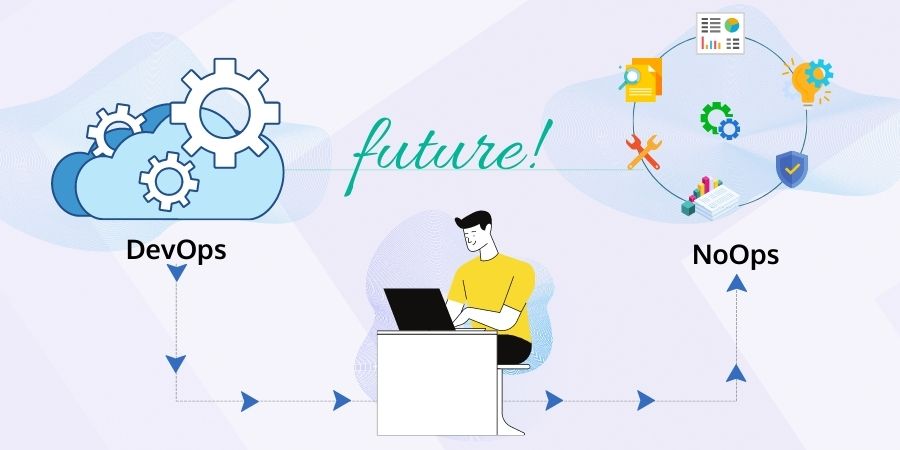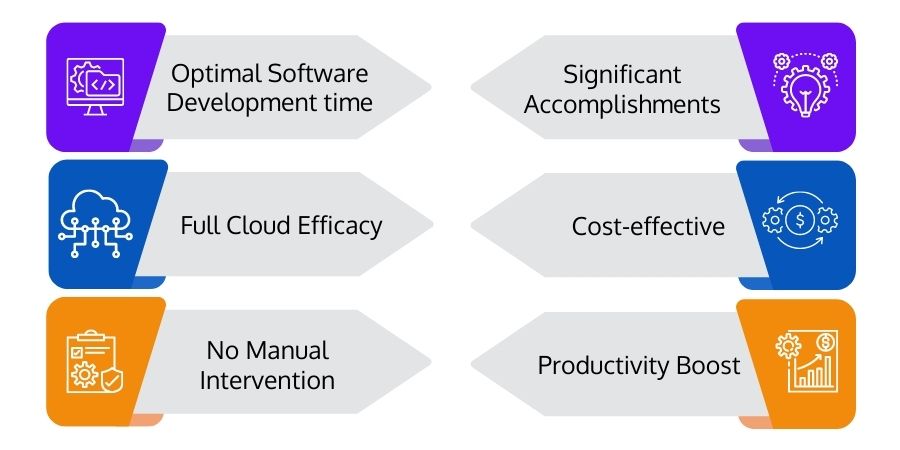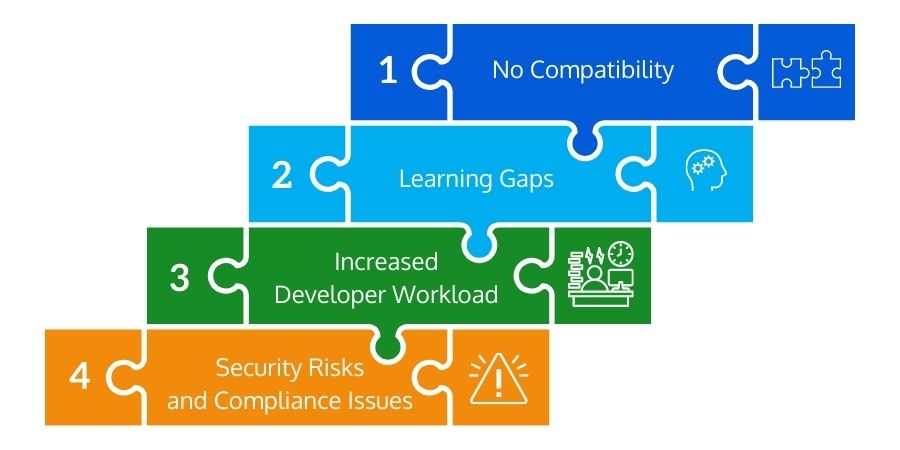
Introduction
Digital initiatives are advancing while adding new processes, tools, and technologies to IT’s exhibition of responsibilities across enterprises. With rising automation, they’ve witnessed a spike in serverless computing, and a variety of "Ops" approaches to automating software and data pipelines.
Undoubtedly, automation has increased efficiency, agility, and scalability, particularly in business IT operations and maintenance. According to an AWS case study, IT operating costs are reduced by 83% with NoOps and serverless microservices.
The conventional software development cycle involves the development team moving an iteration parallel to a specified pipeline. Developers deliver the code to the operation team. Now, the operation team is responsible for maintaining the code for the future. Automation comes to improve the DevOps workflow.
Enterprises anticipate a significant increase in operational efficiency via automating maintenance and responsibilities. The primary purpose is to attain a level of automation where the operations team is no longer required. NoOps has come with many hurdles.
This article explains the essence of NoOps which can go beyond simply removing operations.
An Insight to NoOps
NoOps (no operations) refers to the idea that an IT environment can become so automated and abstracted from the underlying infrastructure that there is no requirement for a dedicated software management team.
Coined by Forrester, the term NoOps defines "the goal of entirely automating the application deployment, monitoring, and management along with the cloud infrastructure upon which they run."
In a NoOps approach, a developer must not collaborate with the operations team. Instead, NoOps employs serverless and PaaS to obtain the required resources. This implies that users can deploy services and tools for utilizing the cloud components. However, NoOps leverages a CI/CD pipeline for deployment.
Basics of NoOps
NoOps is aimed at cloud-based architectures where infrastructure can be a minor burden or the sole responsibility of the service provider. For example, serverless architectures can be NoOps software delivery where developers only construct their applications and deploy them in a serverless environment, eliminating any infrastructure or operational considerations.
NoOps can be an ideal operational plan but lacks proper process management or team management practices. It impedes overall collaboration within a delivery pipeline while burdening developers with managing the software lifecycle without any operational assistance.
In many cases, NoOps will be an excellent method to supplement DevOps practices by providing further automation to a delivery pipeline while maintaining multi-team environments.
DevOps vs. NoOps
- While NoOps aims to automate all the development and running solutions, DevOps focuses on advancing development and operations management.
- NoOps signifies no operation. In contrast to it, DevOps is the amalgamation of development and operations.
- NoOps defines the process where no components of development are combined to perform a task. DevOps, on the other hand, is a component of the cloud requiring DevOps to be set up for performing a task.
- DevOps evolved from a technical orientation to a more business-oriented approach, with the ultimate goal of being faster, cheaper, and of higher quality. Instead of bringing together developers and operators to decrease friction, NoOps emphasizes automation so that developers may focus even more on the code.

NoOps Benefits
Here’re the benefits of employing NoOps
Optimal Software Development Time
To manage the software life cycle, NoOps requires a small team of developers. This entirely automates the IT environment reducing the friction between developers and infrastructure. It aims to allow developers more time to focus on the application's development.
Full Cloud Efficacy
NoOps implementation is interconnected to PaaS, serverless computing, and cloud computing, automating operations monitoring and maintenance. It applies to cloud infrastructure; the developer team shouldn’t worry about resources and distributions.
No Manual Intervention
Human errors exist where there is manual intervention; it won’t happen in the case of NoOps. With the level of automation in NoOps, there will be minimal or no need for human intervention across pipeline operations, implying there is no room for human errors.
Significant Accomplishments
With more time and resources devoted to the development, the software can be completed before scheduled. This gives businesses more time to generate new revenue-generating opportunities.
Cost-effective
As NoOps is a serverless computing model, users only pay for the duration and number of services done. There are no charges if a function is not executed. At last, this removes all idle time.
Productivity Boost
NoOps allows both developers and operations teams to focus on their strengths. Consequently, they can invest time, focus on continuous development, and become more productive in their respective jobs.

NoOps Challenges
No technology comes without challenges in the market. Here are some NoOps obstacles:
No Compatibility
The transition to complete automation can cause hurdles for many businesses. NoOps is not a universal solution because not all applications are compatible with the latest PaaS platforms. Implementing NoOps is ineffective when enterprises have dedicated data centers.
Learning Gaps
As the admins’ responsibilities are removed, they’ll be limited to minimal security patches and server management. They're unlikely to learn some administration responsibilities to upskill themselves. They simply learn to code and improve their skills. On the other hand, the developers could invest time in building, testing, and deploying code on any Function as a Service (FaaS) - the platform handles the rest.
Increased Developer Workload
There is no certainty that NoOps will eliminate the requirement for an operations team. Managing physical infrastructure, information on who utilizes services, and associated expenses will always be necessary. These types of responsibilities will eventually fall on developers' plates.
Security Risks and Compliance Issues
A knowledgeable and experienced operations team is required for businesses to control software's security better and prevent cyber threats from infiltrating program data. Regulations will only apply if the program runs on-premises or in the cloud.
The security team relies on IT operations to manage network policy, administer identity governance, and enforce control. So that the security staff may concentrate on threats, incident response, and policy development. There is a need to communicate with the PaaS to identify and close vulnerabilities, allow administrators access sensitive data, and monitor the activity of privileged users.
Ending Notes
NoOps can function as a self-service model where a cloud provider becomes your operations department, automating the underlying infrastructure layer and eliminating the need for a team to maintain it. Many experts contend that a fully automated IT environment requiring no human intervention, i.e., the concept of NoOps, is unwise or impossible.



























 Batoi Corporate Office
Batoi Corporate Office